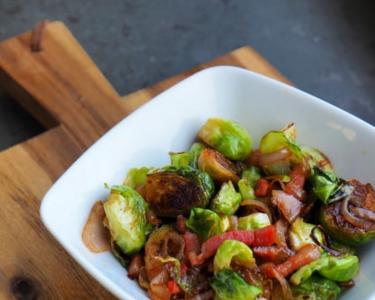Most of us could do with reducing the amount of sugar both we and our children consume, but it is by no means an easy feat.
The fact that it is readily available and temptation is EVERYWHERE, it’s hard to break the habit of a lifetime.
But that's not all.
Not only are sweets becoming a part of our daily consumption, a number of seemingly healthy foods that make up our family essentials contain more than our recommended daily sugar intake.
But before you do a huge clear out of your cupboards, according to nutritionist Elsa Jones it’s not about going cold turkey, but rather adopting a low-sugar diet.
“It’s very difficult to have a no-sugar diet, but it's not necessary. A low-sugar diet is the way to go. “
The World Health Organisation recommends the following when it comes to consuming sugar:
However, while most mums are aware of the obvious sugar culprits, it’s the products that contain hidden sugar that trips them up - but how can you tell how much is in one food item?
Well, Elsa has one very simple, yet useful tool, to help you decipher the amount of sugar in the food you’re about to eat.
1. Keep in mind that 1 teaspoon of sugar = 4 grams.
2. On the ingredients list at the back of a product, look for sugar listed under carbohydrates. The part that says 'of which sugars' is the part you need to look for - this tells you how many grams are in the product.
Why should we cut down anyway?
Consuming too much sugar can cause the following, among other, health problems:
- Extra weight gain
- Energy slumps
- Speed up the ageing process
Giving up sugar is tough, especially if you are trying to reduce your child's consumption of it, however, with the help of Elsa's tips and a positive can-do attitude, you'll be cutting down in no time:
6 steps to beating sugar cravings:
1. Stop feeding your sugar monster
In a nutshell, the more sugary foods you consume, the more your body will crave them. The less you consume, the less you’ll crave them. Once you stop fuelling your cravings, limiting your sugar intake becomes a lot easier. Start by identifying and reducing the biggest sources of sugar in your diet. For most, the obvious culprits are chocolate, biscuits, sweets, scones, soft drinks etc. Within a week, you will notice a dramatic reduction in your cravings for sweet foods.
2. Start as you mean to go on
What you choose to eat for breakfast can set the stage for controlling blood sugar for the rest of the day, so make sure to eat a balanced breakfast. Porridge oats topped with berries and a sprinkle of nuts/seeds or eggs with rye toast will keep blood sugars stable whereas concentrated fruit juices, highly processed cereals or those high in dried fruit will have the opposite effect.
3. Choose slow-release carbs v’s fast-release carbs
Carbohydrates can be classed as fast or slow releasing. Fast release carbohydrates (e.g. white bread, white pasta, corn flakes, pizza) break down into glucose very rapidly which can lead to blood sugar ‘highs’ and ‘lows’. Essentially, eating too many throws our blood sugar levels off balance leading to energy dips and further cravings for sweet or starchy foods - it’s a vicious cycle. Conversely, slow release carbohydrates (brown rice, oats, quinoa) break down into glucose at a slower rate which helps to maintain stable blood sugar and energy levels.
4. Include a portion of protein with every meal
As well as being filling, protein helps to stabilise blood sugar levels which keeps sweet cravings at bay. Protein also provides the building blocks for brain chemicals which influence appetite and satiety. At meal times, aim to fill one quarter of your plate with protein rich food/s such as eggs, fish, poultry, nuts/seeds, beans or lentils.
5. Know your emotional triggers
If you’re like most people who struggle with a sugar habit, much of your eating behaviour is probably driven by emotions. In other words, you don’t choose to eat sugary foods just because you are physically hungry. You choose to eat sugary foods because you want to change or enhance the way you feel, this is known as ‘emotional eating’. Take a moment to think about what feelings make you reach for comfort food? Is it stress, tiredness, boredom…perhaps there are certain times, people or places that trigger these feelings? Once you know, you’ll be in a stronger position to overcome them.
6. Keep healthy snacks close to hand
You’re much more likely to over-eat and/or choose the wrong type of foods when you are overly hungry and have a low blood sugar. Eating little and often counteracts this so always make sure to have healthy snacks close to hand so you have no excuse when temptation strikes. Healthy snack options that will help to curb sugar cravings and stave off an afternoon slump include: a handful of nuts with a piece of fruit, natural yogurt with cinnamon and berries, nut butter spread on sliced apple or an oat cake topped with hummus.
Elsa Jones features in RTÉ's new documentary, Sugar Crash, which sees Dr Eva Orsmond investigate Ireland's consumption of sugar .
Sugar Crash, airs on RTÉ1 on Monday, 11th January at 9:35pm.






